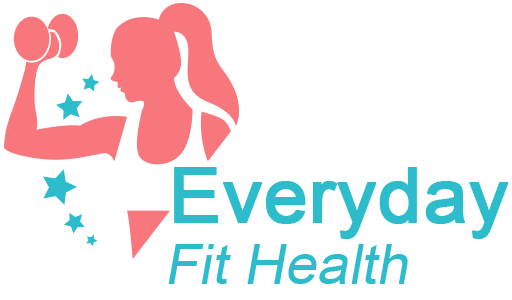Start with a solid nutrition plan
Eat enough calories: To build muscle mass, you need to eat more calories than you burn. This is called a calorie surplus. Aim for a daily calorie surplus of 250-500 calories above your maintenance level.
Focus on protein: Protein is essential for building and repairing muscle tissue. Aim for 1-1.5 grams of protein per pound of body weight per day. Good sources of protein include lean meats, fish, eggs, dairy products, and plant-based protein sources such as beans, lentils, and soy products.
Include carbohydrates: Carbohydrates provide energy for your workouts and help replenish glycogen stores in your muscles. Choose complex carbohydrates such as whole grains, fruits, and vegetables.
Don’t forget healthy fats: Healthy fats are important for hormone production and overall health. Choose healthy sources of fat such as nuts, seeds, avocado, and olive oil.
Hydrate: Proper hydration is essential for muscle function and recovery. Aim to drink at least 8 glasses of water per day.
Consider nutrient timing: Eating the right nutrients at the right time can help maximize muscle growth and recovery. Aim to consume a meal or snack that includes protein and carbohydrates within 30 minutes after your workout.
Avoid processed foods: Processed foods are often high in calories, sugar, and unhealthy fats. Stick to whole, nutrient-dense foods as much as possible.
Consider tracking your macros: Tracking your macros (protein, carbohydrates, and fat) can help ensure that you’re eating enough of each nutrient to support muscle growth.
Eat enough protein
The general guideline for protein intake for building muscle mass is to consume 1-1.5 grams of protein per pound of body weight per day. This can be achieved through a combination of whole food sources such as lean meats, fish, eggs, dairy products, and plant-based protein sources such as beans, lentils, and soy products.
It’s important to spread out your protein intake throughout the day, rather than consuming a large amount in one sitting. Aim to include protein with every meal and snack, and consider using a protein supplement if needed to help meet your daily protein needs.
Overall, consuming enough protein is a critical component of building muscle mass, but it’s important to also maintain a balanced diet that includes adequate carbohydrates and healthy fats to support your overall nutrition needs.
Focus on compound exercises
Here are some of the best compound exercises for building muscle mass:
Squats: Squats are a compound exercise that targets the quadriceps, glutes, hamstrings, and calves. They are one of the most effective exercises for building lower body strength and size.
Deadlifts: Deadlifts work the entire posterior chain, including the back, glutes, hamstrings, and calves. They are a great exercise for building overall strength and size.
Bench press: The bench press is a compound exercise that targets the chest, shoulders, and triceps. It is a staple exercise for building upper body strength and size.
Pull-ups: Pull-ups are a compound exercise that targets the back, biceps, and forearms. They are a challenging exercise but are great for building upper body strength and size.
Rows: Rows are a compound exercise that targets the back, biceps, and shoulders. They come in different variations, such as barbell rows, dumbbell rows, and cable rows, and are effective for building a strong back.
Overhead press: The overhead press is a compound exercise that targets the shoulders, triceps, and upper back. It is a great exercise for building upper body strength and size.
Lunges: Lunges are a compound exercise that targets the quadriceps, glutes, and hamstrings. They are a great exercise for building lower body strength and size.
Lift heavy
Choose the right weight: Choosing the right weight is essential when lifting heavy. You want a weight that is heavy enough to challenge your muscles, but not so heavy that you sacrifice proper form. Start with a weight that allows you to perform 6-8 reps with good form, and gradually increase the weight as you get stronger.
Use proper form: Using proper form is essential when lifting heavy. This will help you avoid injury and ensure that you are targeting the right muscles. If you’re unsure about proper form, consider working with a personal trainer or watching videos online to learn the correct technique.
Focus on compound exercises: Compound exercises are the most effective exercises for building muscle mass, and they are also the best exercises for lifting heavy. Examples include squats, deadlifts, bench press, pull-ups, and rows.
Incorporate progressive overload: Progressive overload is essential when lifting heavy. This means gradually increasing the demands placed on your muscles over time. This can be achieved by increasing weight, reps, or sets, or reducing rest time between sets.
Allow for proper recovery: When lifting heavy, it’s important to allow your muscles enough time to recover. Aim for 48-72 hours of rest between workouts that target the same muscle group.
Stay safe: When lifting heavy, safety should be your top priority. Always warm up properly before lifting, use a spotter when necessary, and listen to your body. If you experience pain or discomfort, stop lifting immediately and seek medical attention if necessary.
Incorporate progressive overload
Increase weight: As you get stronger, gradually increase the weight you lift. Aim to add 2-5 pounds to your lifts each week to ensure a steady progression.
Increase reps: Gradually increase the number of reps you perform for each exercise. Aim to add 1-2 reps per week to challenge your muscles.
Increase sets: Adding an additional set to your workout can increase the amount of stress placed on your muscles and promote muscle growth.
Reduce rest time: Reducing the rest time between sets can increase the intensity of your workout and promote muscle growth.
Use advanced techniques: Incorporating advanced techniques such as drop sets, supersets, and forced reps can help to stimulate muscle growth by increasing the intensity of your workouts.
Allow for proper recovery
Get enough sleep: Aim for 7-9 hours of sleep per night. Sleep is when your body repairs and regenerates, so getting enough rest is essential for muscle growth.
Stretch: Stretching after a workout can help reduce soreness and improve flexibility, which can reduce the risk of injury.
Take rest days: It’s important to take at least one or two rest days per week to allow your muscles to recover. Use this time to do low-impact activities like walking or yoga.
Foam roll: Foam rolling can help release tension in your muscles and improve circulation, which can help reduce soreness and promote recovery.
Stay hydrated: Drinking enough water is essential for proper muscle function and recovery. Aim for at least 8 glasses of water per day.
Incorporate active recovery: Active recovery activities like swimming or cycling can help increase blood flow to your muscles, which can promote recovery and reduce soreness.
Avoid overtraining: Overtraining can lead to injuries and slow down your progress. Listen to your body and take breaks when you need them.
Stay consistent
Set realistic goals: Setting achievable goals will help you stay motivated and focused. Make sure your goals are specific, measurable, and time-bound.
Develop a routine: Establish a regular workout routine that fits your schedule and lifestyle. This will help you stay on track and make progress.
Track your progress: Keep a record of your workouts, including the exercises, sets, reps, and weights used. This will help you track your progress and make adjustments as needed.
Stay accountable: Find a workout partner or coach who can help keep you accountable and motivated. This can be a great way to stay consistent and make progress.
Be patient: Building muscle mass takes time, and results won’t come overnight. Stay patient and stay consistent, and you will see progress over time.
Consider supplements
Whey Protein: Whey protein is a fast-digesting protein that is easily absorbed by the body. It’s a convenient way to increase your protein intake and promote muscle growth and recovery. Whey protein supplements come in powder form and can be added to smoothies or mixed with water.
Creatine: Creatine is a natural substance that helps produce energy for muscle contractions. It can increase strength and power output, which can lead to greater gains in muscle mass over time.
Branched-Chain Amino Acids (BCAAs): BCAAs are essential amino acids that help to promote protein synthesis and prevent muscle breakdown. They are commonly found in protein-rich foods such as meat, fish, and eggs, but can also be taken in supplement form.
Beta-Alanine: Beta-alanine is an amino acid that can help to increase endurance and delay fatigue during high-intensity exercise. It’s commonly found in pre-workout supplements.
Caffeine: Caffeine is a stimulant that can increase energy, focus, and performance during workouts. It can also help to reduce fatigue and muscle soreness.
In conclusion, building muscle mass requires a combination of proper nutrition, consistent training, and adequate rest and recovery. Follow these tips and stay consistent, and you’ll be on your way to achieving your muscle-building goals.












